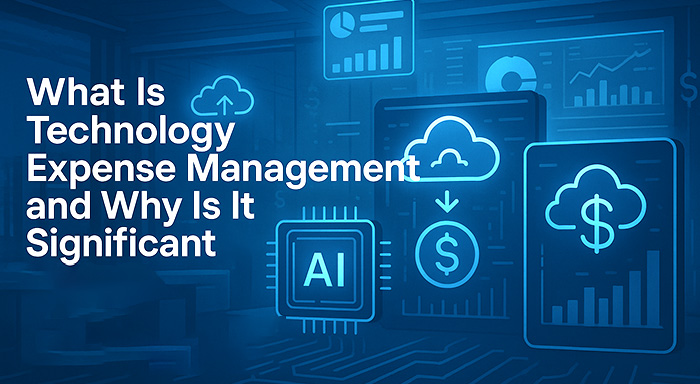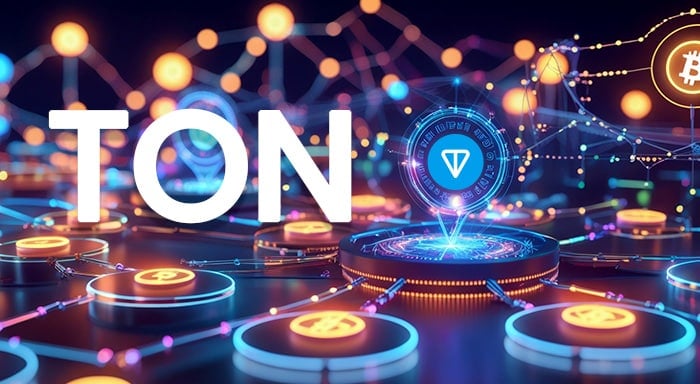Technology Expense Management can be described as a toolset or method to monitor technology and extract actionable insights on its IT services and assets. With sophisticated solutions, TEM services ensure higher visibility into technology inventories and streamline efficiency via automation. Thus, it ensures an optimal level of cost savings.
With every passing year, large companies experience the challenge of upgrading their tech stack. Furthermore, they need to do that while balancing equipment requirements, expenditure, and bottom line. Thus, the needs of the finance department and IT departments can contradict each other. This happens in the backdrop of legacy platforms which rarely integrate with one another and impact business processes. Let us start our discussion by understanding what Technology Expense Management is and its significance.
What Is Technology Expense Management?
It can be defined as the process of efficiently handling services and expenses to fully leverage resources, reduce costs, and ensure process efficiencies in finance management. TEM platforms ensure a centralized ecosystem to optimize and track service and cost usage in particular for telecom, cloud, and mobile technologies. TEM solutions generally serve finance, IT, and procurement teams by ensuring:
- In-depth visibility into expenses and any technology, resources, services, or assets that are being wasted.
- Recommended methods to effectively utilize purchased services or save on expenses.
- Automated platforms and processes to expedite governance practices and financial management.
What Is the Significance of Technology Expense Management?
TEM ensures great value to the organization by serving as a liaison between various groups in the organization. To put it simply, technology expense management solutions provide an actionable view of all their technological services and assets. This involves everything an asset might need starting from its acquisition, deployment, maintenance during shelf life, and ultimately its disposal. This involves managing contracts with servicing, providers, usage monitoring, and bill payment.
Essentially, TEM services allow an organization to work smartly by streamlining and centralizing tasks:
- Business intelligence includes analytics and sophisticated reporting.
- Automated invoice audits.
- Best practices in IT asset management.
- Change control, inventory management, and tracking compliance.
- Order management, procurement, accounts payable, and fulfillment.
- Employee expense reimbursement and management.
Without a neat system, data collection from all these areas, its organization, and examining it as per the standards can be a time-taking and laborious process. Inefficient and disorganized workflows generally lead to expensive errors that can convert a lead into imprecise prediction. Through a sophisticated Technology Expense Management platform, such workflows can be automated to ensure great improvement in terms of accuracy and speed. These two things are non-negotiable in the contemporary marketplace. In turn, this minimizes the workload on finance teams and IT expanse management. Consequently, they can concentrate more on their main tasks.
Advantages of Technology Expense Management
The core advantages of this process are detailed in the below-mentioned points:
Streamlining of IT Expenditure:
Optimization of Resources: Recognize, remove, or reallocate underutilized or obsolete devices, services, and plans.
Financial Savings: TEM enables significant savings across cloud, mobile, and telecom services by recognizing and removing inefficiencies.
Invoice Auditing: Automatic invoice auditing with configurable audit rules ascertains accurate billing and figures out areas for more savings.
Simplifying Finance and IT Processes:
Data-based Decision Making: Sophisticated data analytics convert large data sets into implementable insights for smart decision-making.
Investment Governance and Review: Integrate governance and digital investment reviews to handle digital performance more effectively.
Streamlined Processes: Simplify auditing, order fulfillment, payment processes, and management of assets, improving overall efficiency and freeing up useful resources.
Improved Compliance: By keeping a close watch on your industry assets and expenditure, you can ensure compliance with regulatory guidelines and industry standards.
Improved Visibility and Transparency:
Visibility: TEM services focus on providing a complete overview of technology expenses across distinct departments. This involves monitoring of cloud, mobile phones, and fixed/telecom expenditures.
Analytics of Data: Such services generally include tools to understand and utilize data to support decision-making activities. However, the depth and complexity of these platforms can differ.
Personalization: A few TEM services provide personalizable dashboards to help concentrate on important trends and datasets relevant to the particular requirements of your business.
Technology Expense Management thus ensures advantages that evolve beyond operational efficiency, cost savings, security, and compliance throughout your technology ecosystem.
What Is the Issue with Conventional TEM Approaches?
Traditionally, the TEM process has emphasized managing expenses associated with telecommunication services. This involves mobile, fixed, and data communications. Over the years, the scope of the process has widened and now covers a diverse range of IT services like software and cloud expenses.
The main expenses of the TEM solution generally include the below-mentioned components:
- Invoice Management.
- Inventory Management.
- Expense Optimization.
- Analytics and Reporting.
While conventional TEM systems are greatly valuable, they are generally limited by their lack of actionable and real-time data as well as the need for manual processes. Sophisticated TEM solutions today such as Brightfin focuses on overcoming these limitations through integration, automation, and sophisticated analytics. This ensures an efficient and effective way of handling technology expenses.
We invite you to write for us! Check out our Technology Write for Us guidelines and get your content featured alongside quality articles like this one!
Modern Technology Expense Management Approach
The modern method ensures a more efficient, simplified, and precise way to handle technology expenses:
Integrated Inventory Management: The platform ensures a centralized view to see all technology-related data. This involves not only fixed telecom services and mobile devices but also hardware assets, cloud subscriptions, and more. Thus, it removes the need for manual data entry and manual updates, minimizing errors and ascertaining that you always have an up-to-date and accurate inventory.
Sophisticated Invoice Management: Instead of processing the invoices separately, the modern approach involves consolidating all of your technology invoices into a centralized platform like ServiceNow. This allows you to verify invoices against contracts, automate payment processes, and recognize billing discrepancies and errors.
Optimization of Expenses in Real-time: The main advantage of the modern approach is the fact that you can optimize and analyze your technology expenses within a centralized platform directly. By utilizing sophisticated analytics and real-time data, you can recognize cost-saving opportunities such as underutilized or unused services, contract negotiation, duplicate charges, etc.
Analytics and Visualizations: The modern approach ensures powerful reporting capabilities within the same centralized environment. This feature enables you to visualize all your technology expenses, monitor trends over time, and create insights to make your technology strategies data-driven. Furthermore, since all of your data exists within the centralized platform, your team need not switch between numerous platforms or manually compile information for reporting.
Adaptability and Scalability: With time, your organization will grow and evolve significantly. However, a fully featured modern platform enables you to adapt to your organization’s needs dynamically. Essentially, a modern platform can quite simply accommodate new vendors, services, and changes within your organizational ecosystem. Moreover, if you incorporate ServiceNow, you can also benefit from the updates that it will introduce in the future.
Conclusion
In 2026, Technology Expense Management has become a lot more than just a standard cost-saving method. It is more of now a strategic need. Advanced TEM platforms allow businesses to centralize data, automate processes, and make informed decisions in real-time. As organizations deal with evolving complexity in handling telecom, cloud, and IT services, TEM ascertains more compliance, visibility, and operational efficiency. Through simplifying workflows across IT and finance, it reduces manual workload and maximizes Return on Investment. For organizations looking for accuracy, agility, and control, incorporating a modern TEM approach is not an optional choice; it is a strategic imperative.



